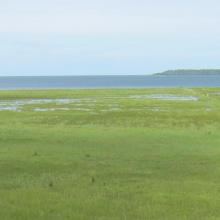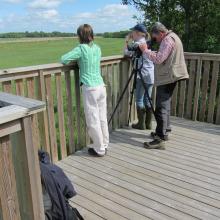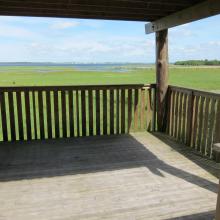



Dättern
- Country:Sweden
- Site number:432
- Area:3,990 ha
- Designation date:12-06-1989
- Coordinates:58°23'N 12°36'E
Materials presented on this website, particularly maps and territorial information, are as-is and as-available based on available data and do not imply the expression of any opinion whatsoever on the part of the Secretariat of the Ramsar Convention concerning the legal status of any country, territory, city or area, or of its authorities, or concerning the delimitation of its frontiers or boundaries.
Overview
The Site consists of a shallow, freshwater bay, fringed by reedbeds at the south-west end of Lake Vänern. The nutrient-rich waters support abundant plankton and are regarded as one of the most important spawning areas in Sweden for the pike-perch Lucioperca lucioperca. The Site was extended in November 2001 to include part of the River Nossan, which is important for spawning asp (Aspius aspius). It also holds an outstanding variety of plant species, with its grazed pastures and shore lines supporting a rich annual flora. Dättern is an important breeding and resting place for birds such as nationally endangered Eurasian penduline tit Remiz pendulinus and the nationally vulnerable spotted crake Porzana Porzana. Human activities include livestock grazing and fishing. Maintaining traditional grazing is essential for maintaining the ecological character of the meadows. 208 hectares of wet meadow have been restored, which has enhanced breeding conditions for birds within the Site. There is a management plan for each of the two nature reserves and a conservation plan for the Natura 2000 Site. An observation platform can be found.
Administrative region:
Västra Götaland
- National legal designation:
- Nature reserve (1) - Dättern I
- Nature reserve (2) - Dättern etapp II.
- Regional (international) legal designations:
- EU Natura 2000
- Last publication date:27-03-2017
Downloads
Ramsar Information Sheet (RIS)
Archived RIS
Site map
Additional reports and documents
- Taxonomic lists of plant and animal species occurring in the site
- Site management plan
- Other published literature
